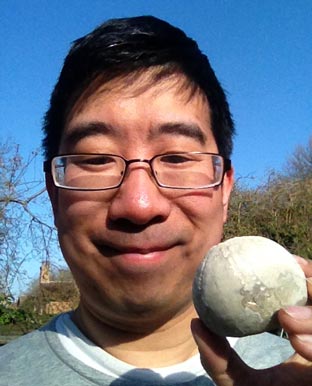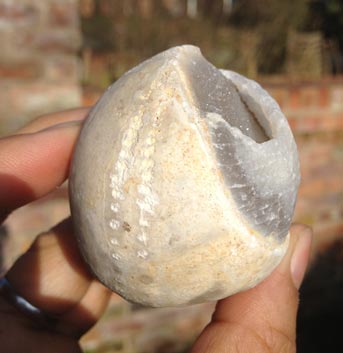Exciting Cretaceous Fossil Finds from the “Jurassic Coast”
Fossils from Cretaceous Strata to be Found at Lyme Regis
In December 2001, the Dorset and East Devon coast (southern England), was awarded World Heritage status by UNESCO. This made this part of England’s coastline the country’s first natural World Heritage Site, ranking this part of the world alongside the likes of the Great Barrier Reef and the Galapagos Islands.
Ninety-Five miles of stunning coastline from Orcombe Point at Exmouth heading east to the Old Harry Rocks, which marks a passage in the Earth’s geological history from around 250 million years ago to approximately 65 million years ago, a time known as the Mesozoic Era.
Lyme Regis
Places like Lyme Regis and Charmouth are great places to find Jurassic fossils, amazing remains of marine creatures such as ammonites, belemnites and crinoids (sea lilies). However, with all the bad weather that the Dorset coastline has endured over the last two years or so, the beaches in the area are proving to be a happy hunting ground for some remarkable Cretaceous aged fossil specimens.
Brandon Lennon, a highly respected professional fossil collector from the Lyme Regis area reports that with all the wet weather a lot of the Cretaceous beds from higher up the cliffs, overlying the older Jurassic aged strata have deposited younger fossil material onto the beaches surrounding Lyme Regis. Land slips and mud slides have left large amounts of flint and chert rocks strewn about the beach. Keen eyed fossil hunters, perhaps on an organised fossil walk with Brandon, have been able to find lots of Cretaceous aged fossils.
Some fine specimens of irregular sea urchins (Echinoids) (irregular sea urchins tend to have less circular and more oval tests), have been found including heart shaped specimens – Micraster sp. One lucky fossil hunter (Iain) displays his sea urchin find in the picture below.
Fossils from Cretaceous Chalk Deposits Being Found at Lyme Regis
Picture credit: Brandon Lennon
Fossil Expert Comments
Fossil expert Brandon commented:
“You literally see a lot of Cretaceous aged debris scattered all across beach. Beaches to the west and the east of the town [Lyme Regis] have been affected. Some fine examples of Micraster sp, are being picked up from the mid beach areas. One lady found a beautiful shark’s tooth in near perfect condition when sieving material on the beach.”
The bad weather and the subsequent land slides have provided fossil collectors with a rare opportunity to explore these beaches for younger Cretaceous aged marine fossils, from a time when much of the land we know today as the United Kingdom was covered by a warm, tropical sea.
A Close up of the Sea Urchin
Picture credit: Brandon Lennon
This fossil has been preserved as an internal mould in the flint, or the Lyme Bay agate, the calcite plates of the specimen have been lost but this is a terrific and rare fossil find for this part of the world.
Sea Urchin Fossils
We at Everything Dinosaur have just one specimen of an irregular sea urchin from the Cretaceous beds of Lyme Regis, plus some trace fossils of worm casts from the same deposits but our sea urchin specimen is not as well-preserved as this fine example.
With the Lyme Regis Fossil Festival set to get under way in a few days time (May 3rd until May 5th, it looks like there will be lots of interesting fossils to study and view. The theme for this years festival is “Our Treasures”, it looks like it is not just Jurassic aged fossils that people can find on the beaches, some lucky fossil hunters might just find themselves a lovely sea-urchin fossil too.
One word of advice, these fossils are being found on the beaches as the unstable cliffs collapse and there is still a risk of landslides. It might be advisable to take a conducted tour of the Lyme Regis beaches with a professional fossil hunter and guide such as Brandon Lennon.
To read more about Brandon Lennon’s fossil walks: Lyme Regis Fossil Walks.



